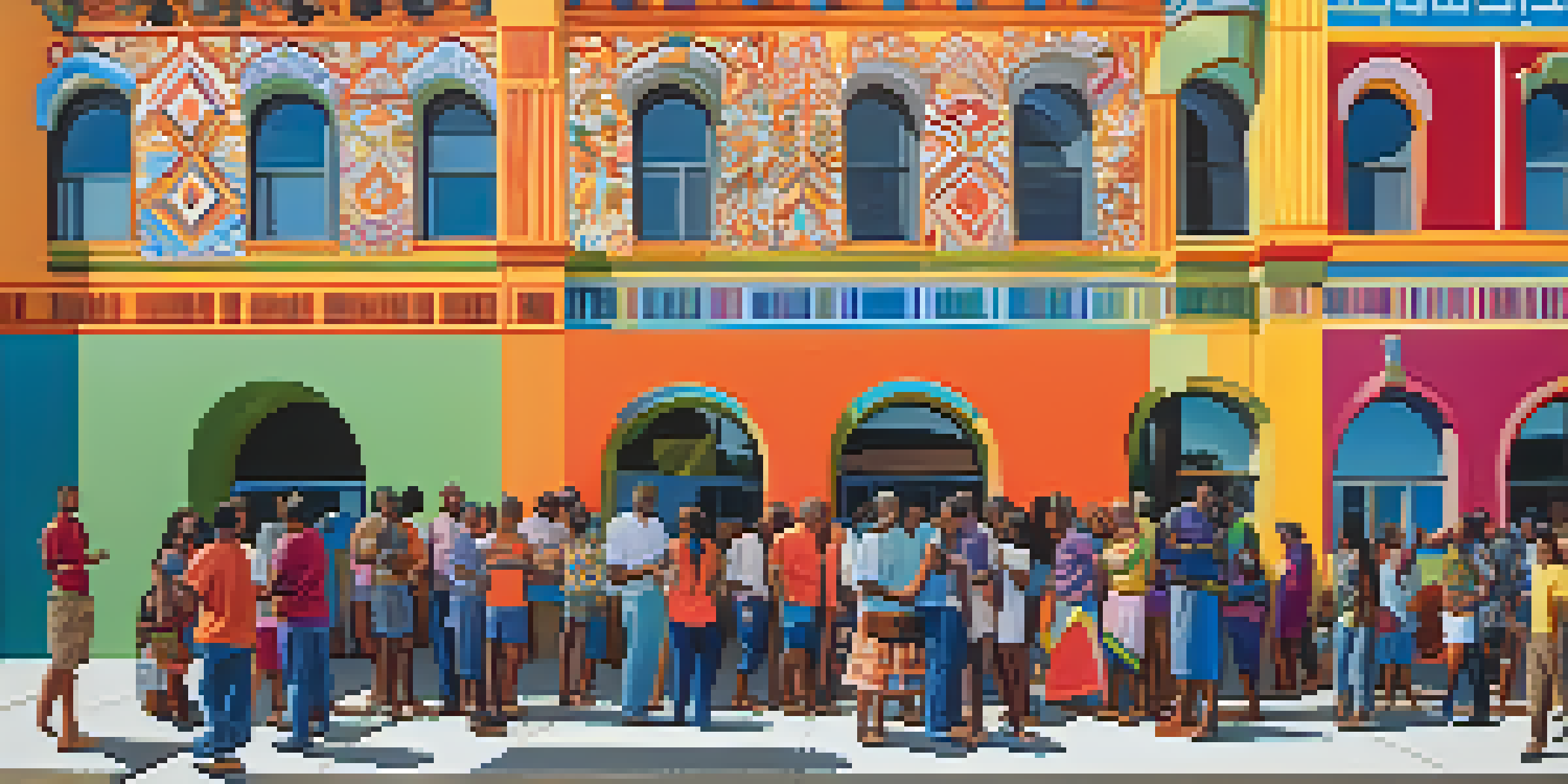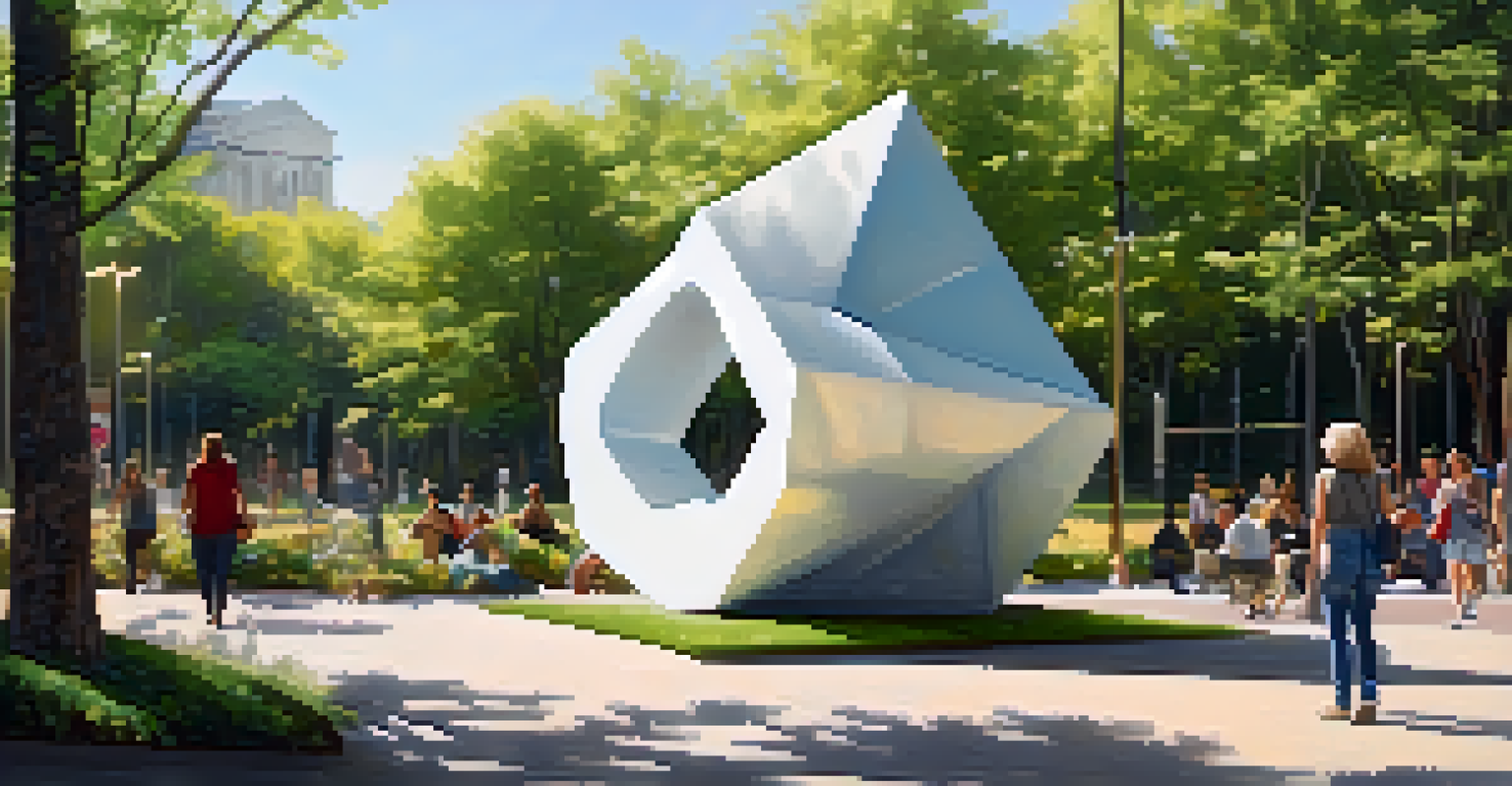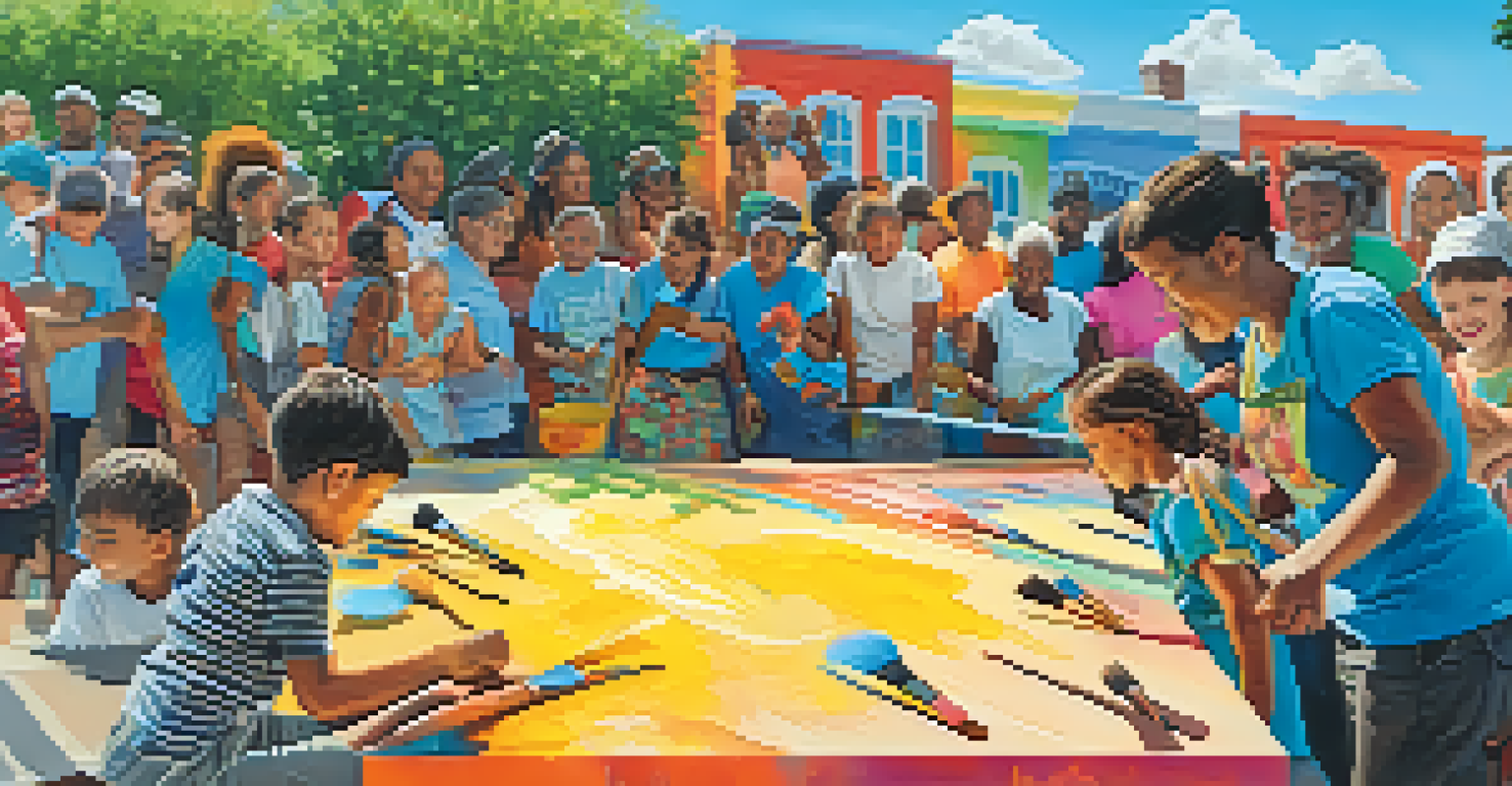The Role of Community Organizations in Public Art Projects

Understanding the Essence of Public Art Projects
Public art projects are more than just visual spectacles; they serve as a reflection of the community's identity and values. These projects can transform ordinary spaces into vibrant areas that foster creativity and connection. Often, they involve murals, sculptures, or installations that tell stories unique to the locale, inviting both locals and visitors to engage with the art and the environment.
Public art is a mirror reflecting the community's identity, aspirations, and diversity.
The planning and execution of these projects typically involve a collaborative process, where artists and community members come together to brainstorm ideas. This collaboration ensures that the art resonates with the audience and represents the community's spirit. When public art projects are thoughtfully integrated into the environment, they can significantly enhance the aesthetic appeal and cultural richness of a neighborhood.
Moreover, public art can spark conversations about social issues, history, and culture, making it a powerful tool for community engagement. By addressing relevant themes, these projects can inspire positive change and foster a sense of belonging among residents. Thus, understanding the essence of public art projects helps highlight their potential to unite and uplift communities.
The Vital Role of Community Organizations
Community organizations play a crucial role in the success of public art projects by serving as bridges between artists and local residents. They often take the lead in organizing events, gathering input, and mobilizing support for the projects. These organizations possess deep knowledge of the community's needs and aspirations, ensuring that the art created is meaningful and relevant.

Additionally, community organizations often have established networks that facilitate collaboration among various stakeholders, including local governments, businesses, and artists. This collaborative approach not only helps in securing funding and resources but also fosters a sense of ownership among community members. When residents feel connected to a project, they are more likely to support and engage with it.
Public Art Reflects Community Values
Public art projects serve as a vibrant reflection of a community's identity, fostering connection and creativity.
Moreover, these organizations can provide valuable training and educational opportunities for emerging artists, helping to cultivate local talent. By offering workshops and mentorship programs, community organizations ensure that the artistic voices of the community are heard and celebrated. This empowers individuals and enhances the overall quality of public art initiatives.
Engaging the Community in the Creative Process
One of the most impactful aspects of community organizations is their ability to engage residents in the creative process of public art projects. Through workshops, brainstorming sessions, and surveys, these organizations gather valuable input from community members, ensuring that the final artwork reflects their collective vision. This participatory approach not only enriches the artistic outcome but also fosters a sense of pride among residents.
Art is not what you see, but what you make others see.
For instance, when an artist collaborates with local residents to create a mural, the design often incorporates symbols and stories that resonate deeply with the community. This connection to the art encourages residents to take ownership and responsibility for the space, making them more invested in its upkeep and appreciation. Ultimately, the process itself can strengthen community bonds and encourage ongoing dialogue.
Moreover, engaging the community in the creative process can help address social issues and raise awareness about important topics. By incorporating themes that reflect the community's challenges and aspirations, public art projects can serve as catalysts for change and inspire action. This collaborative spirit creates a vibrant ecosystem where art and community thrive together.
Fostering Inclusivity Through Public Art
Inclusivity is a core value that community organizations champion in public art projects. They strive to ensure that all voices are heard, regardless of age, background, or ability. By actively involving diverse groups in the planning and execution phases, these organizations create art that represents the whole community, not just a select few.
This commitment to inclusivity not only enriches the artistic narrative but also promotes understanding and empathy among residents. When people from different walks of life come together to create art, they share their experiences and perspectives, fostering a greater sense of belonging. This collective engagement can help dismantle barriers and build a more cohesive community.
Community Organizations Drive Success
Community organizations play a crucial role in public art projects by bridging the gap between artists and local residents.
Additionally, community organizations often partner with schools, cultural groups, and other local entities to broaden participation. These partnerships can result in unique projects that celebrate the community's diversity, such as collaborative murals that showcase various cultural traditions. By prioritizing inclusivity, public art becomes a powerful tool for unity and healing.
Economic Benefits of Public Art Projects
Public art projects not only enrich the cultural landscape but also bring significant economic benefits to communities. By attracting visitors and tourists, these projects can boost local businesses and create new job opportunities. When a community invests in public art, it signals to potential visitors that it values creativity and culture, making it a more desirable destination.
Community organizations often help to leverage funding for these projects, whether through grants, sponsorships, or fundraising events. This financial support can lead to the development of more ambitious art initiatives that further enhance the community's appeal. For instance, vibrant public art can transform an underutilized area into a bustling hub of activity, benefiting local shops and eateries.
Moreover, the presence of public art can increase property values and attract new residents looking for a vibrant community. This ripple effect demonstrates how community organizations play a pivotal role in harnessing the economic potential of public art projects, ultimately contributing to community growth and sustainability.
Building Community Identity Through Art
Public art projects have the power to shape and reflect community identity. Through murals, sculptures, and installations, they tell the stories of the people and places that make a community unique. Community organizations facilitate this process by encouraging residents to share their histories, values, and aspirations, which can be woven into the fabric of the art.
When art embodies the community's essence, it fosters a sense of belonging and pride among residents. This shared identity can lead to increased civic engagement, as people feel more connected to their neighborhood and motivated to contribute positively. For example, a mural depicting local legends or historical events can inspire community members to learn more about their heritage.
Inclusivity Enhances Artistic Impact
By prioritizing inclusivity, public art projects can unite diverse voices, fostering empathy and a sense of belonging.
Furthermore, public art can also serve as a means of celebrating diversity within the community. By incorporating various cultural influences and perspectives, these projects can promote understanding and unity. This celebration of identity through art not only enriches the community's cultural landscape but also strengthens the bonds that hold it together.
Sustaining Public Art Projects for the Future
Sustaining public art projects is essential for maintaining their impact over time. Community organizations play a key role in this process by advocating for ongoing support and funding. They can help establish maintenance plans and promote awareness about the importance of preserving public art, ensuring that it continues to enrich the community for years to come.
Additionally, these organizations often facilitate community-led initiatives that encourage residents to take an active role in caring for the art. This can include organizing volunteer clean-up days, educational programs about the significance of the art, and events to celebrate its presence. By fostering a sense of stewardship, community organizations empower residents to protect their artistic treasures.

Moreover, as communities evolve, public art projects can be adapted to reflect changing values and needs. Community organizations can help facilitate discussions about the future of public art, encouraging ongoing dialogue and innovation. This adaptability ensures that public art remains a relevant and dynamic element of community life, continually inspiring and engaging residents.